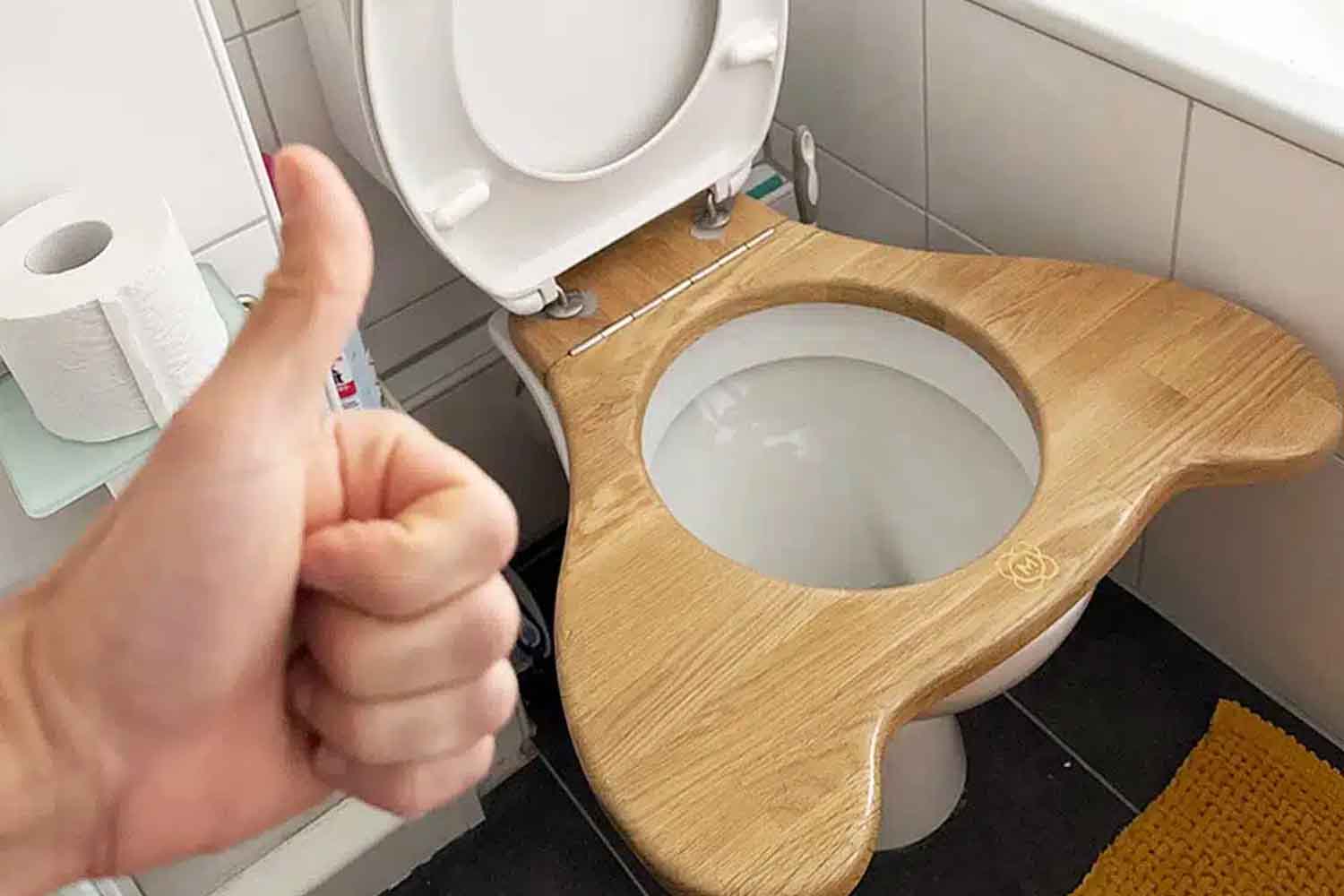Mulasana, a simple device designed to encourage squatting during bowel movements, challenges the traditional sitting position used in Western toilets. While promoting better health and hygiene, it seeks to normalize a natural posture long forgotten in the West.

©Mulasana
It might sound a bit odd at first, but it’s actually a serious topic, according to Antoine Lahorgue, a shiatsu therapist based in Nantes, France. From this insight, Mulasana was born: a WC support that allows users to adopt a squatting position—the natural posture our bodies are built for. Made from recycled plastic and validated by ADEME (the French Agency for Ecological Transition), it is sold for $202 (€189) plus VAT. The goal? To bring back a posture that’s physiologically optimal, a posture that, in the West, has long been forgotten.
It may seem like a quirky idea, but the numbers are hard to ignore, even in the United States. According to the American Gastroenterological Association, over 40% of Americans suffer from constipation regularly. This issue is even more prevalent among women, especially after the age of 40. And while poor diet and stress are often blamed, could the unnatural position we adopt daily in the bathroom also play a significant role?
Lahorgue hasn’t exactly invented something new. In many parts of the world, squatting is still the norm for evacuation. In Europe and the U.S., however, elevated toilets became common at the end of the 19th century, introducing a position that’s far less compatible with our body’s natural functions.
The problem with sitting: a hidden health risk
Sitting on a toilet closes the angle of the rectum and compresses the colon, which makes evacuation more difficult. This can lead to constipation, hemorrhoids, prolapse, and, according to some studies, even colon cancer. But that’s not all—almost 90% of women, in order to avoid direct contact with toilet seats in public restrooms, adopt unnatural and contracted postures, increasing the risk of urinary tract infections and cystitis. A strange paradox, to say the least.
Lahorgue’s solution is simple and natural:
Squatting should be as natural as breathing.
This could be a quiet revolution that, despite its low profile, may profoundly improve our digestive health and ease the burden on the healthcare system.
Sustainability and local impact, but a market slow to embrace change
Despite being locally produced in France using entirely recycled materials, Mulasana has struggled to secure investment. Its environmental benefits were enough to win validation from ADEME, but banks are still cautious:
They’re waiting to see the product’s numbers first.
In the meantime, a participatory funding model has been launched, where contributors can receive royalties based on sales.
Some institutions have already bought into the idea. For instance, three schools in Nantes have installed the device in their bathrooms. The results have been positive: fewer cases of constipation, improved well-being, and, most importantly, early education on human physiology. It’s a small but significant step toward changing deeply rooted habits.
Why sitting may not be the best option for your body
We’ve always been accustomed to sitting on the toilet, but is this really the most suitable posture for our body? According to recent studies and the experiences of those behind devices like Mulasana, the answer is no.
When sitting, the colon is compressed, and the angle between the rectum and anus closes, making evacuation more difficult. This can slow down bowel movements and, over time, lead to chronic constipation, hemorrhoids, pelvic organ prolapse, and recurring infections. Squatting, on the other hand, allows the colon to naturally align, creating an open and physiological passage that facilitates a complete bowel movement.
When it comes to comfort, the difference is also quite clear. Sitting may feel comfortable because we’re used to it, but it’s not an ergonomically ideal position for evacuation. Squatting, in contrast, relaxes the abdominal and pelvic muscles, making the process quicker, more natural, and less stressful on the body.
Squatting: better hygiene, less discomfort
The choice of posture also impacts hygiene, especially in public places. Sitting on the toilet means coming into direct contact with the seat—a gesture many women avoid by balancing precariously, which increases muscle tension and the risk of urinary tract infections and cystitis. Squatting solves this problem at its root: no contact, a stable posture, and better protection.
In the West, elevated toilets have long been the standard. But introducing the squatting position into our bathrooms is not impossible—it’s as simple as using a device like Mulasana, which allows us to return to a natural posture without completely overhauling our domestic spaces.
Changing your posture, therefore, is not just about breaking habits. It’s a choice that can benefit the body, alleviate pain and discomfort, improve hygiene, and even reduce the need for medication and laxatives. A small but powerful daily revolution, starting in the bathroom and impacting our health.
A cultural shift, not just a posture change
For Lahorgue, it’s not just about changing posture, but about challenging a deeply ingrained cultural model. His references draw from medical studies showing how squatting promotes digestive health, aids women post-partum, and could prevent chronic intestinal disorders.
Yet, in the Western collective imagination, squat toilets still evoke images of discomfort, dirtiness, and backwardness. Mulasana aims to dismantle this taboo, showing that returning to a natural posture is far from a step backward.
Source: Mulasana
